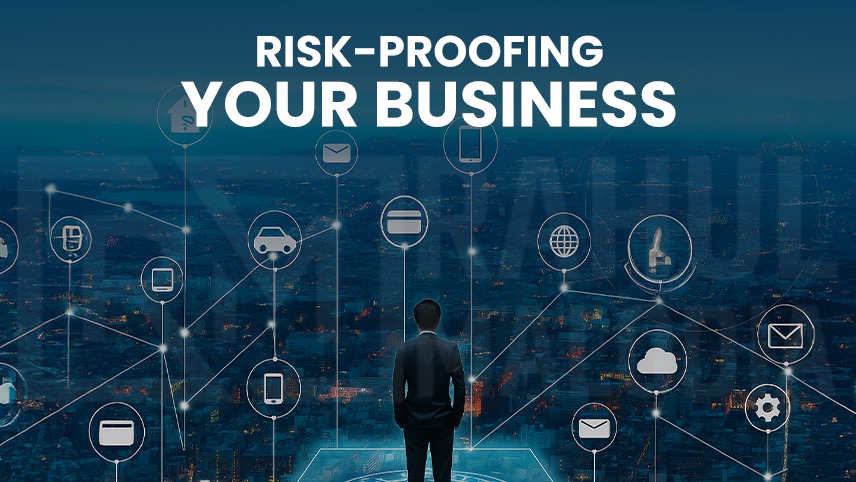Every CEO talks about growth. Revenue targets. New markets. Bigger dreams.
But rarely do they talk about risk. Not the dramatic kind.
The silent, creeping kind that grows when you’re too busy chasing opportunities to notice the danger signs.
Here’s the truth: most businesses don’t fail because of one big mistake. They fail because the warning signs were ignored for too long. The markets were shifting. Consumer behavior was changing. Technology was evolving. But the business didn’t move.
This blog isn’t about fear. It’s about awareness. Because once you know what to watch, you can act early. And that can be the difference between a thriving business and a slow decline.
So if you’re a CEO, founder, or business owner, this is your radar.
Let’s decode the 7 market signals that could save your business from hidden risk.
1. Declining Customer Retention Is a Bigger Alarm Than Falling Sales
When monthly revenue drops, most businesses panic. But a more dangerous signal is when loyal customers start leaving quietly.
Think about it. It’s 5 to 10 times more expensive to get a new customer than to keep the one you already have, so focus on building loyalty, not just chasing leads.
If existing clients are not sticking around, it means they’re not seeing value anymore. That’s not just a sales issue; it’s a product or experience issue.
A falling retention rate is often the first sign that your competitors are doing something better, or your offerings are becoming outdated.
Don’t wait for your profits to crash before taking action. Watch your churn rate.
If customers aren’t coming back, your business is already bleeding.
2. Industry Pricing Pressure Isn’t Just About Competition, It Signals Commoditization
Are your profit margins shrinking, even though your sales team is working harder than ever?
That’s not a sales problem. That’s a market structure problem.
When customers start comparing prices more than quality or service, it’s a sign that your product has become a commodity. And in a commoditized market, the lowest price wins.
This can kill even the best-run businesses, because no matter how efficient you become, someone will always be cheaper.
If pricing pressure is rising in your industry, it’s time to differentiate or diversify. Add services. Build exclusivity. Create a brand story.
No matter what, avoid getting dragged into a price war; it’ll cost you more than you think. That’s a race to zero.
3. Supply Chain Disruptions Are Here to Stay
In the post-COVID world, supply chains aren’t what they used to be. One port closure in China or a geopolitical tension in Europe can disrupt raw material delivery in India.
If your business depends on one or two suppliers, or a single country, you’re walking on a tightrope.
Smart CEOs today see supply chain resilience not just as a backup plan, but as a core business strategy. They’re not just cutting costs; they’re diversifying suppliers, localizing vendors, and building buffer inventories for key items.
If your procurement team still sees disruption as a “temporary issue,” you’re sitting on a ticking time bomb.
Markets move fast. And so should your sourcing strategy.
4. Digital Disruption in Your Industry Doesn’t Announce Itself, It Arrives Suddenly
Kodak ignored digital photography. Nokia laughed off smartphones. Both were giants. Both collapsed.
Every industry today has a startup somewhere trying to digitize what you still do manually. Maybe it’s billing, delivery, customer onboarding, or sales automation. But it’s happening.
If your customers are spending more time on apps than with your team, or if your competitors are launching tech-enabled platforms, you can’t wait any longer.
Digital disruption is not coming. It’s already here.
The only question is, will you lead it, or lose to it?
5. Regulatory Changes Aren’t Bureaucracy, They’re Market Signals in Disguise
Most CEOs treat new government rules as a burden. GST compliance, labor codes, data privacy, they’re seen as distractions from “real” business.
But if you read between the lines, regulatory changes often reveal where the market is headed.
When the Indian government pushes digital invoicing, it’s not just compliance; it’s a hint that paper billing is dying. When data protection laws evolve, it’s a signal that customer trust will become a competitive advantage.
Smart CEOs treat regulatory shifts as early signals. They adapt fast. And often, they find new business opportunities where others see only hurdles.
Because in every regulation, there’s a chance to lead.
6. Employee Turnover Isn’t Just HR’s Problem, It’s a Business Warning Sign
Most CEOs only hear about attrition in boardrooms, but few dig deeper into why it’s happening.
Here’s what many overlook: when top talent leaves, it’s usually not just about the paycheck. It’s about toxic culture, lack of direction, or no growth opportunities.
If your best performers are quitting, something is broken at the core. Maybe your leadership is disconnected. Maybe your company’s vision isn’t resonating. Or maybe growth has stalled, and employees feel it.
High attrition is like losing muscle mass. On the surface, everything looks fine. But internally, you’re getting weaker.
For deeper insights into improving team retention, this guide on employee engagement strategies is helpful.
7. Customer Sentiment Has Shifted, But You’re Still Using Last Year’s Playbook
This is the most invisible, yet most dangerous signal.
Your customers may not be complaining. But they’re not excited either.
Maybe they’ve started trusting influencers over ads. Maybe they now expect WhatsApp support instead of helplines. Or maybe they want personalization instead of discounts.
If your marketing still sounds like it did in 2019, and your sales process hasn’t evolved, you’re missing out on a silent shift in consumer behavior.
The world has changed. AI is mainstream. Chatbots are expected. Instagram Reels are marketing platforms. If you don’t talk in your customer’s language, someone else will.
Great CEOs listen to the silence. They study sentiment, not just sales.
Because sentiment is what shapes tomorrow’s revenue.
Why Most CEOs Miss These Signals, And How You Don’t Have To
The truth is, most business owners are too deep in operations.
They’re fighting fires. Approving invoices. Managing teams.
But markets don’t wait. And risk doesn’t knock. It just walks in.
The best CEOs don’t just focus on quarterly numbers. They zoom out. They watch trends, shifts, and undercurrents.
And most importantly, they act early.
Risk-proofing isn’t about reacting faster. It’s about predicting sooner.
You don’t need a PhD in economics. You just need curiosity, awareness, and discipline.
Start with simple questions:
What’s changing? Who’s doing it better? What do my customers feel but aren’t saying?
These aren’t just questions. They’re business shields.
Final Thoughts: Turn Market Noise Into Business Clarity
In a world full of noise, news, data, opinions, your job as a CEO is to separate signals from static.
These 7 signals aren’t just theory. They’re real patterns playing out across Indian businesses every day. Ignore them, and you’ll be surprised. Watch them, and you’ll be ready.
In business, it’s not the strongest or the fastest who succeed; it’s the ones who adapt quickly, take bold action, and lead with courage.
Risk is always present. But with the right radar, it never has to be fatal.
So, next time the world whispers a change, don’t wait for a disaster.
Pivot. Prepare. Protect.
Because in business, survival isn’t luck. It’s leadership.
Author Bio
This article was contributed by Rahul Malodia, who helps businesses grow with strategic insight and operational clarity.

